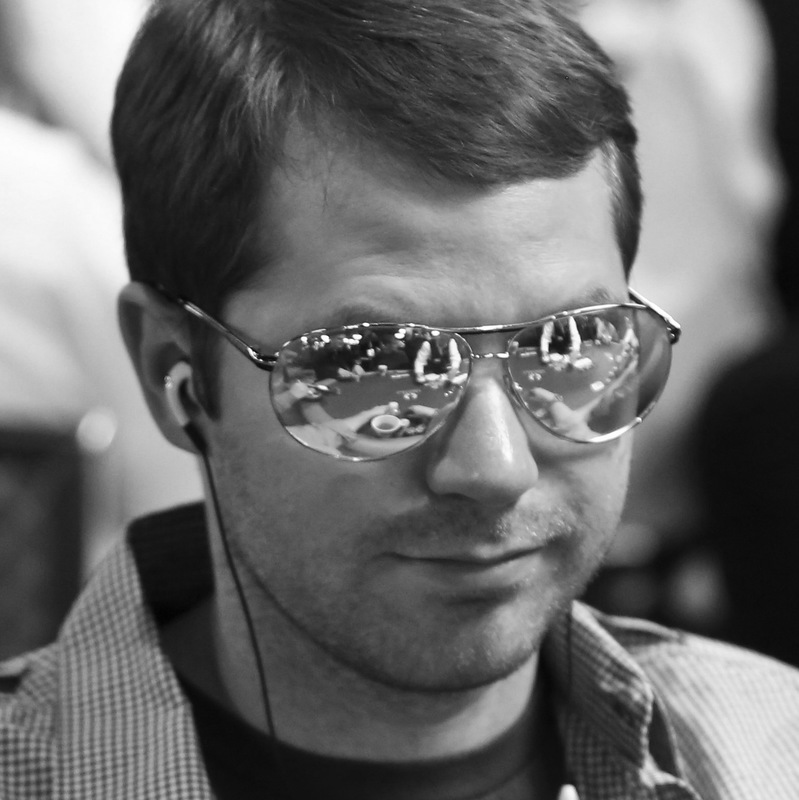






Betting Too Smallby Jonathan Little | Published: Jul 17, 2019 |
|
|
I was recently told about a hand that illustrates an error that many small-stakes poker players make on a regular basis, but rarely notice that costs them a substantial amount of money in the long run.
In a $1-$2 no-limit cash game, five players limped around to our Hero in the small blind who raised to $10 out of his $100 effective stack with Q Q
Q .
.
Hero should have certainly raised to a larger size. For the most part, when you want to raise or reraise before the flop, you should make about a pot-sized raise. To calculate a pot-sized raise, you multiply the last bet by three and then add in any additional money that is in the pot. When you are in the small blind, assume you called the limp. Since the last bet is a $2 limp, the equation is:
Pot sized raise = 3 X 2 + 2 + 2 + 2 + 2 + 2 + 2 = $18
When Hero makes it $10, he will get a large number of callers. When you give your opponents excellent pot odds, they are rarely making mistakes by calling. You profit in poker when your opponents make mistakes, not when they play well, so don’t force them to play well.
Only three players called. The flop came 9 7
7 5
5 . Hero bet $20 into the $47 pot.
. Hero bet $20 into the $47 pot.
While a small bet is acceptable, I would have bet larger, perhaps $32. This is a flop where Hero is almost certain to go broke against the flopped sets, so his main goal should be to extract maximum value from worse made hands and draws. While betting $20 gets a bit of money in the pot, most made hands and draws will call a larger amount. Betting $32 also allows Hero to easily push all-in on the turn for a little less than a pot sized bet if one player calls, making that bet a strong option.
Two opponents called. The turn was the 2 . Hero bet $25 into the $107 pot.
. Hero bet $25 into the $107 pot.
Just like on the flop, Hero should have bet larger, this time all-in. By going all-in, he prices out the various draws while also extracting value from decently strong made hands like J-J, A-9, and 9-8. Betting small gets less money in the pot against the strong hands while also giving the draws acceptable odds to see the river.
Both opponents called. The river was the A . Hero checked.
. Hero checked.
I like this check. While the ace shouldn’t be too great for the opponents unless they have A-9, A-7, or A-5, Hero will now have a difficult time extracting additional value from middle pairs. Also notice that most players who have middle pairs will check behind, meaning when Hero faces a bet, he is usually against a rivered two-pair or perhaps a busted draw.
The first caller went all-in for $43 into the $107 pot. The second caller folded.
This is a tough spot, but I think a fold is ideal unless Hero is quite sure his opponent is bluffing into two opponents with 10-8, which is possible, or overvaluing a worse made hand, which seems improbable.
Hero called and lost to A 7
7 .
.
After losing his entire stack, Hero got angry and started berating his opponent about his poor play, but in reality, it was Hero’s poor play that resulted in him getting outdrawn. Don’t be oblivious to your mistakes. ♠
 Jonathan Little is a two-time WPT champion with more than $6 million in tournament winnings. Each week, he posts an educational blog and podcast at JonathanLittlePoker.com, where you can get a FREE poker training video that details five things you must master if you want to win at tournament poker. You can also sign up for his FREE Excelling at No Limit Hold’em webinars at HoldemBook.com/signup.
Jonathan Little is a two-time WPT champion with more than $6 million in tournament winnings. Each week, he posts an educational blog and podcast at JonathanLittlePoker.com, where you can get a FREE poker training video that details five things you must master if you want to win at tournament poker. You can also sign up for his FREE Excelling at No Limit Hold’em webinars at HoldemBook.com/signup.
Features
The Inside Straight
Strategies & Analysis